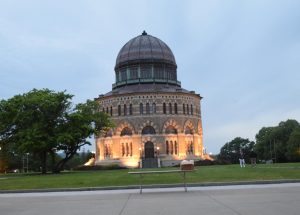Human and Denisovan DNA reveals a more recent extinction
April 28, 2019
2019 has already become a major year for investigations into the history and evolution of humans. Early this spring a new species known as Homo luzonensis was discussed in the journal “Nature” after new bones were found in the Philippines. Besides discovering completely new species, researchers are learning more about the timeline of speciation extinctions that led to the dominance of Homo sapiens.
New research suggests that Denisovans, a human-like species, may have existed and bred with humans as recently as 15,000 to 30,000 years ago. The work was completed by Murray Cox of the University of Palmerston North and Herawati Sudoyo from the University of Jakarta. Their findings were reported on in ”Science” by Ann Gibbons. Cox and Sudoyo led a team that studied DNA from current residents of southeast Asia. Participants from New Guinea maintained a large contiguous section of Denisovan DNA on their chromosomes, suggesting that ancestral humans mated with Denisovans far more recently than previously hypothesized.
According to National Geographic, the first Denisovan bones were discovered in a Siberian cave in 2008. By analysing the mitochondrial DNA preserved in those bones, researchers determined that the Denisovans were related to both humans and Neanderthals. Multiple studies have indicated that descendents of South-East Asianers, particularly the people of Papua New Guinea, have inherited DNA from ancient Denisovan ancestors.
Geneticists theorize that Denisovans and Neanderthals share a common ancestor with modern humans. Some researchers hypothesize that a common ancestor to of humans, Denisovans and Neanderthals migrated out of Africa and evolved into the Denisovan species in the East and the Neanderthals in the West. When ancient humans migrated from Africa 60,000 years ago, they may have interbred with existing Neanderthal and Denisovan populations, leading to the presence of Neanderthal and Denisovan DNA within human populations.
The recent study by Cox and Sudoyo revealed that multiple, genetically distinct, Denisovan populations existed in Asia. The Denisovan DNA of New Guineans was significantly different from that found in the rest of Southeast Asia, suggesting that several Denisovan populations survived and at least two interbred with human ancestors.Cox and Sudoyo used the knowledge of multiple Denisovan populations, in combination with their analysis of modern human DNA, to argue for a more recent mixing event.
According to “Science,” other researchers report that it is far more likely for separate Denisovan populations to have mated with Southeast Asian residents around 50,000 years ago (the previous estimate). Those separate human populations, each with different Denisovan DNA, may have then mingled and led to modern humans with larger amounts of Denisovan DNA inherited from two ancient populations.
These questions may be resolved sooner rather than later, as new data becomes available on Denisovans. In late March 2019, at a meeting of the American Association of Physical Anthropologists, Bence Viola reported on confirmed Denisovan skull fragment. The fragment was discovered in 2016 and that DNA evidence recently confirmed that this skull piece did indeed belong to a Denisovan. “Science News” reports that the team led by Viola found the bones to be thicker than typical human cranial bones. This new evidence may help further the studies of Denisovan evolution and extinction.
Studying ancestral humans may reveal hominid species died out and could uncover some of the genes that humans acquired to enhance their survival. Cox reported that two Denisovan genes found in humans are used by Australian clinicians to predict responses to autoimmune conditions. Ultimately, nearly all modern humans possess DNA inherited from Neanderthal, Denisovan and other hominid ancestors.Understanding the function and inheritance of those genes may provide additional to insights into human wellbeing.






